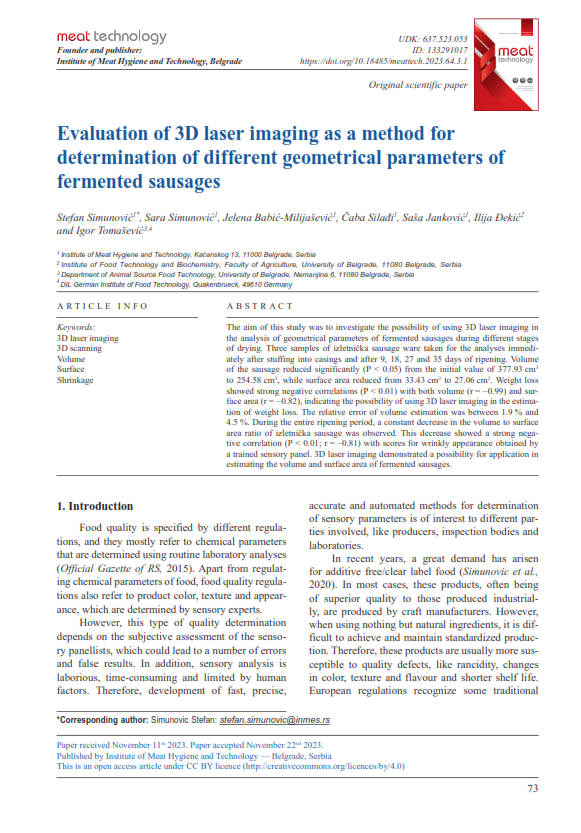Sensory quality, oxidative stability, textural and fatty acid profile of nitrite-reduced kulen fermented sausage during ripening
Abstract
The aim of the study was to investigate the effect of nitrite reduction on oxidative stability, chemical composition, textural and sensory properties of traditional kulen sausage. In total, three batches of kulen were made. The control batch (C) contained 110.0 mg/kg of sodium nitrite (NaNO2), the second (R1) batch contained 55 mg/kg of NaNO2, while the third (R2) was produced without nitrites. Nitrite removal from the sausage formulation significantly affected oxidative stability, while the reduction of nitrite from 110 mg/kg to 55 mg/kg did not affect the oxidative stability of the product. When it comes to texture, complete removal of nitrite from kulen resulted in significantly lower values of hardness, gumminess and chewiness. Sensory scores for colour were similar between all analysed batches. However, scores for aroma, taste, consistency and overall acceptability were significantly lower in R2 batch sausages. At the same time, scores of all investigated sensory parameters were similar for sausages formulated with 110 mg/kg and 55 mg/kg of NaNO2.





